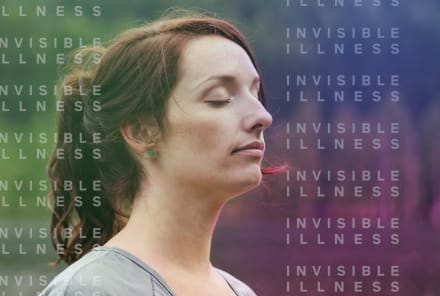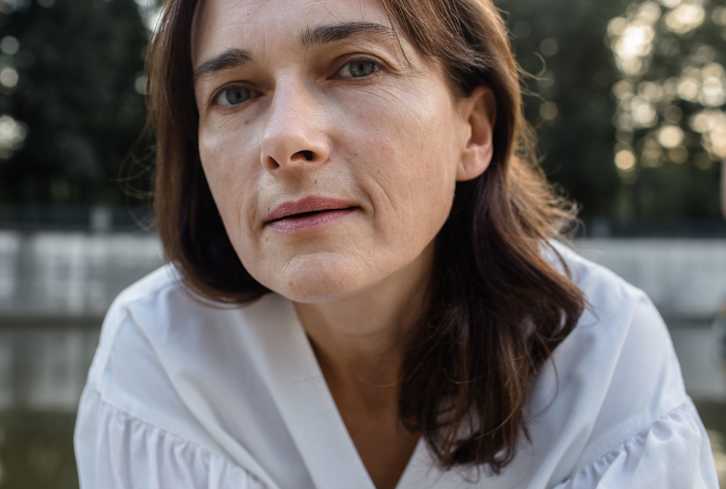Advertisement
A Harrowing Train Crash Left Me With Countless Injuries — How I Recovered From The Trauma


"I'm OK?" These were the first words I tried to whisper when I woke up in the hospital—a statement posed as a question. In the years that followed, those uncertain words continued to ring in my mind: I'm OK? I had endured a dozen surgeries and counting; I had graduated from a hospital gurney to a wheelchair to a walker to crutches to standing on my own two feet; and I had weaned myself from the heaviest pain medications and pulled out of my depression, only to have new setbacks steal my progress. I'm OK. Period. Or question mark?
The accident.
I was a passenger on Amtrak 188 on May 12, 2015, the day that train derailed outside Philadelphia in a massive accident that killed eight passengers and wounded more than 150. My chance of survival was slim. I was thrown from the train at such speed that my abdominal organs were rammed up into my chest, rupturing my diaphragm. Nearly all the ribs on my left side were crushed, my pelvis was broken in half, and multiple vertebrae in my neck and back were fractured.
An object had penetrated my left hip, crushing my hip bone, and the wound was open and dirty. My spleen was destroyed, intestines badly lacerated, bladder ruptured, and my lungs collapsed. Later, my orthopedic surgeon said if someone had told him about a patient coming to the ER with my injuries, his next question would have been, "When did they die?"
Given the force my body must have absorbed to produce those injuries, the doctors were stunned I was not paralyzed and did not sustain a major brain injury. Nearly every system in my body was severely affected, but over the course of the next few years, I recovered. I recovered, but I'll never be the same. My body is different, and I am different. Physically and emotionally, I have scars that won't go away. But I am OK.
Beginning to heal.
From the moment I returned to consciousness and found myself in the ICU, I had no idea what to expect—I had no idea what the process of healing would involve. Each time I was faced with a new hurdle or setback, I wished someone could have warned me and that I'd been better prepared.
At first, I assumed my bones would mend in a few weeks and I'd be back to normal with an incredible story to tell about how I'd spent my summer. As my pain and recovery wore on month after month, and my expectations were revealed to be wildly unrealistic, I searched for a book to help me understand the aftermath of what doctors call "polytrauma" and make sense of what I was experiencing.
Trauma is a whole-body experience, regardless of which bones are broken.
Most of the resources I found were dry accounts by doctors and psychiatrists. They didn't tell me what it was actually like to try to get my life back. They didn't describe how it felt to wake up every morning frozen in pain or to endure the suspicious glance of a pharmacist when I went to pick up my fentanyl prescription.
They didn't help me understand why my husband, Jonathan, and I were having the worst fights of our marriage. Albert Schweitzer, a famous German physician and philosopher, writes of "the brotherhood of those who bear the marks of pain." I needed to connect to members of that brotherhood—people who had been there—who could help me deal with the present and the path ahead.
Coming to terms with the reality of recovery.
Recovery was like hiking a steep and tortuous mountain path, with little guidance on the distance to the top—a lot of effort for minor progress, a lot of doubts about the route chosen, but occasionally, a glimpse of a wondrous view over a valley that helps bring perspective. There were tremendously low moments, but the highs were equally high. I had so many laughs and intensely meaningful conversations with family and friends over those two years, and I have learned much about life I wouldn't have learned otherwise.
To this day, I am frequently saddened by the senselessness of the accident. The names and faces of my fellow passengers who lost their lives are burned into my memory, and I have wept with some of their families.
Against this background, it feels heartless to suggest that any kind of silver lining came as a bonus with survival. But it would also be wrong to avoid drawing something positive from the years of pain.
There is a Tibetan saying: "Wisdom is like rainwater—both gather in the low places." Psychiatrists call the process "post-traumatic growth." I am a stronger person after what I've been through. The experience has made me more aware of the joy in my life and the freedom and power to frame my own perspective.
Healing from trauma.
During my recovery, I tried to learn as much as I could about how the body reacts to trauma and pain. Developing this understanding helped me control the self-loathing and hopelessness I felt when I simply couldn't get out of bed in the mornings, and it helped me better understand the interdependence of the body and mind. Physical injury to the body can have a profound biochemical effect on our psychological well-being.
Conversely, our state of mind can affect sensations of pain and the pace of physical recovery. Understanding this connection gave me back at least some sense of control over a body that I simultaneously hated and revered.
Trauma is a whole-body experience, regardless of which bones are broken. Recovery is similarly all-encompassing. One trauma expert describes three ways of dealing with trauma: top-down, bottom-up, and medication. I used them all. Some of the tools that helped me, I never thought I'd consider—like yoga and breathing exercises. Others came easily, like making jokes and drinking wine with friends.
In the years since the accident, I've met a number of other "miraculous" trauma survivors. Everyone's journey is different, but we all now identify as people with a "before" and an "after" in our lives. There is power in sharing our stories. My hope is to offer a resource for fellow survivors, their caregivers, and anyone else who wants to understand the recovery experience and hear the story of someone who has been there—healing moment by moment, bone by bone.
This is an excerpt from Bone by Bone: A Memoir of Trauma and Healing by Geralyn Ritter, published June 28, 2022, by Core Media Group.
Watch Next
Enjoy some of our favorite clips from classes
Enjoy some of our favorite clips from classes
What Is Meditation?
Mindfulness/Spirituality | Light Watkins
Box Breathing
Mindfulness/Spirituality | Gwen Dittmar
What Breathwork Can Address
Mindfulness/Spirituality | Gwen Dittmar
The 8 Limbs of Yoga - What is Asana?
Yoga | Caley Alyssa
Two Standing Postures to Open Up Tight Hips
Yoga | Caley Alyssa
How Plants Can Optimize Athletic Performance
Nutrition | Rich Roll
What to Eat Before a Workout
Nutrition | Rich Roll
How Ayurveda Helps Us Navigate Modern Life
Nutrition | Sahara Rose
Messages About Love & Relationships
Love & Relationships | Esther Perel
Love Languages
Love & Relationships | Esther Perel



















